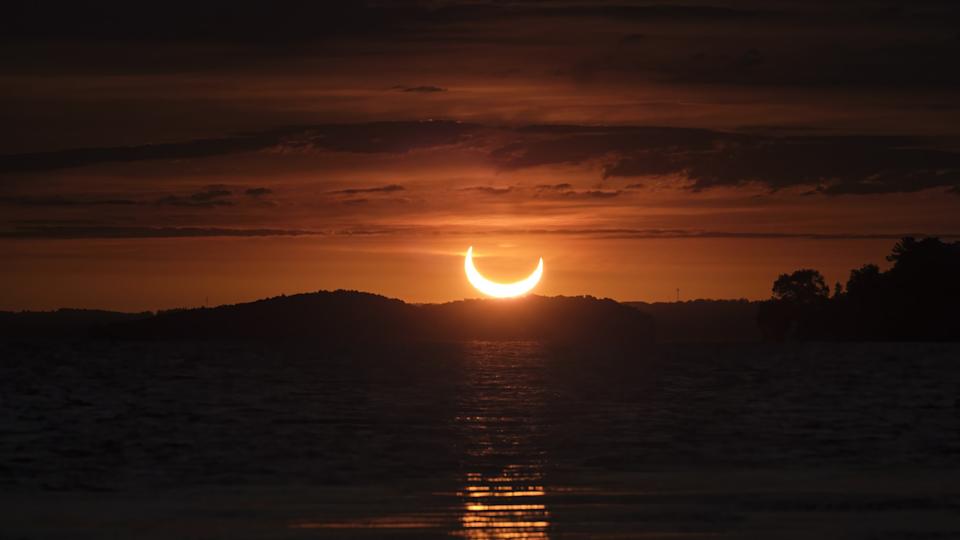Skywatchers across eastern Canada are in for a stunning celestial show this weekend. On the morning of Saturday, March 29, 2025, a partial solar eclipse will occur at sunrise, producing a rare optical illusion dubbed the “solar horns” or “double sunrise.”
This captivating sight is caused by the Moon partially covering the Sun just as it rises, making it appear as though two fiery horns are emerging from the horizon—a spectacle visible only from select regions.
The “solar horns” effect will be most visible in southeastern Quebec and southwestern New Brunswick, particularly between the St. Lawrence River estuary and the Bay of Fundy, according to Space.com. Residents of Quebec City, Saint John, and Halifax can expect an exceptional view, with up to 90% of the Sun obscured by the Moon.
Northeastern Canada, eastern Ontario, and parts of Nunavut and the Northwest Territories will also experience a significant eclipse. In Ottawa, for instance, observers can expect around 20–30% coverage of the Sun.
Meanwhile, viewers in cities like Cornwall, Belleville, and Clarington in Ontario may catch a partial glimpse of the eclipse under clear skies.
To find out when and where the eclipse will be visible in your area, visit TimeandDate.com or follow the eclipse path on Google Maps.
This solar event comes just two weeks after a dramatic blood moon and lunar eclipse was visible across Canada. The back-to-back celestial phenomena have thrilled astronomy enthusiasts and photographers alike.
“This is a particularly exciting time for skywatchers,” said Rachel Ward-Maxwell, astronomy and space sciences programmer at the Ontario Science Centre. “The rare solar horns effect adds a dramatic twist to the usual solar eclipse experience. For those in the Atlantic provinces and Nunavut, this will be a morning to remember.”
Officials are urging the public to take proper eye safety precautions when viewing the eclipse.
The Canadian Space Agency (CSA) and NASA warn that viewing a solar eclipse without certified protective gear can result in permanent eye damage or blindness. Only eclipse glasses that meet ISO 12312-2 international safety standards should be used. Regular sunglasses are not sufficient.
If your eclipse glasses from last April’s total solar eclipse are undamaged, they may still be safe for use.
Alternatively, you can safely observe the eclipse using an eclipse projector or pinhole camera.
Schools, libraries, and science centers across the affected regions are encouraged to host viewing events, provide public education, and distribute safety materials.
“The March 29 eclipse is not just a stunning natural event—it’s an opportunity to engage communities in science and inspire the next generation of explorers,” said Ward-Maxwell.

